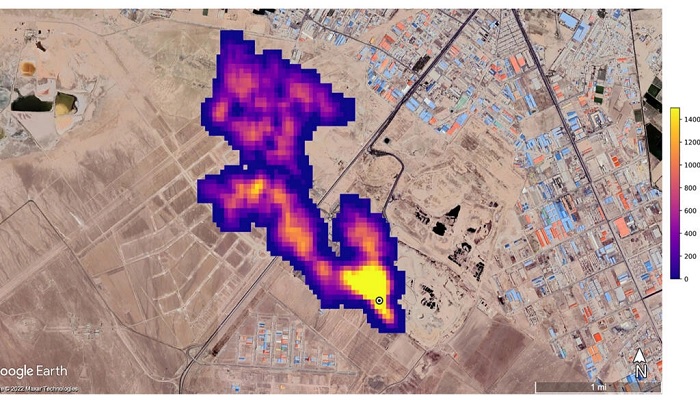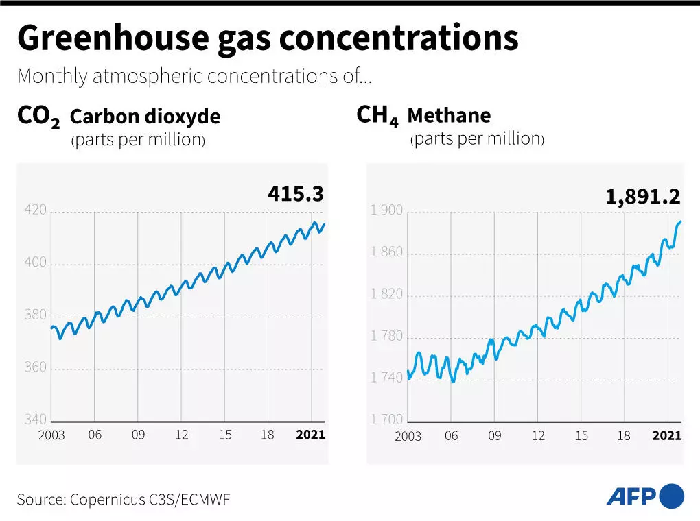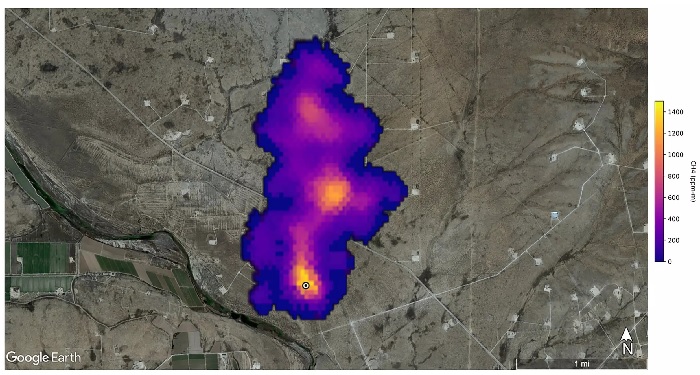[ad_1]
NASA scientists, using an instrument designed to study how dust affects the climate, have identified more than 50 spots around the world that emit significant levels of methane, a development that could help combat the potent greenhouse gas.
Curbing methane emissions is key to reducing global warming. NASA Director Bill Nelson said in a press release Tuesday.
“Not only will this exciting new development help researchers better pinpoint the source of the methane leak, but it will also provide insight into how to address it — quickly.”
NASA He said the Earth’s Surface Mineral Dust Source Investigation (EMIT) is designed to advance understanding of the effects of airborne dust on climate.
But EMIT, which was installed on the International Space Station in July and can focus on areas as small as a soccer field, has also shown the ability to detect the presence of methane.
NASA said more than 50 “super emitters” of methane have been identified in Central Asia, the Middle East, and the southwestern United States so far. Most of them are related to the fossil fuel, waste or agriculture sectors.
“The additional ability to detect methane at EMIT provides an incredible opportunity to measure and monitor greenhouse gases that contribute to climate change,” said Kate Calvin, NASA’s chief scientist and chief climate advisor.
exceeds our expectations
Methane is responsible for nearly 30 percent of the global temperature rise so far.
While it is less abundant in the atmosphere than carbon dioxide, it is about 28 times more potent than a greenhouse gas on a century time scale. Over a 20-year time frame, they are 80 times more effective.
Methane only lingers in the atmosphere for a decade, compared to hundreds or thousands of years for carbon dioxide.
That means a sharp drop in emissions could remove several tenths of a degree Celsius from projected global warming by mid-century, helping to maintain the Paris Agreement’s goal of capping the average global temperature to 1.5 degrees Celsius, according to the United Nations Environment Programme. (United Nations Environment Programme). ).
“EMIT will likely find hundreds of super-emitters — some previously detected by atmospheric, space, or ground measurements, and others unknown,” NASA said.
Some of the methane plumes detected by EMIT are among the largest ever seen, said Andrew Thorpe, a research technologist at the Jet Propulsion Laboratory who leads the methane emissions effort.
“What we found in such a short time really exceeds our expectations,” Thorpe said.
NASA said a plume of methane about 2 miles (3.3 kilometers) long was detected southeast of Carlsbad, New Mexico, in the Permian Basin, one of the world’s largest oil fields.
It added that 12 columns of oil and gas infrastructure were identified in Turkmenistan, east of the coastal city of Hazar on the Caspian Sea.
NASA said a plume of methane at least three miles (4.8 kilometers) long was detected south of Tehran from a major waste treatment complex.
[ad_2]
Source link



